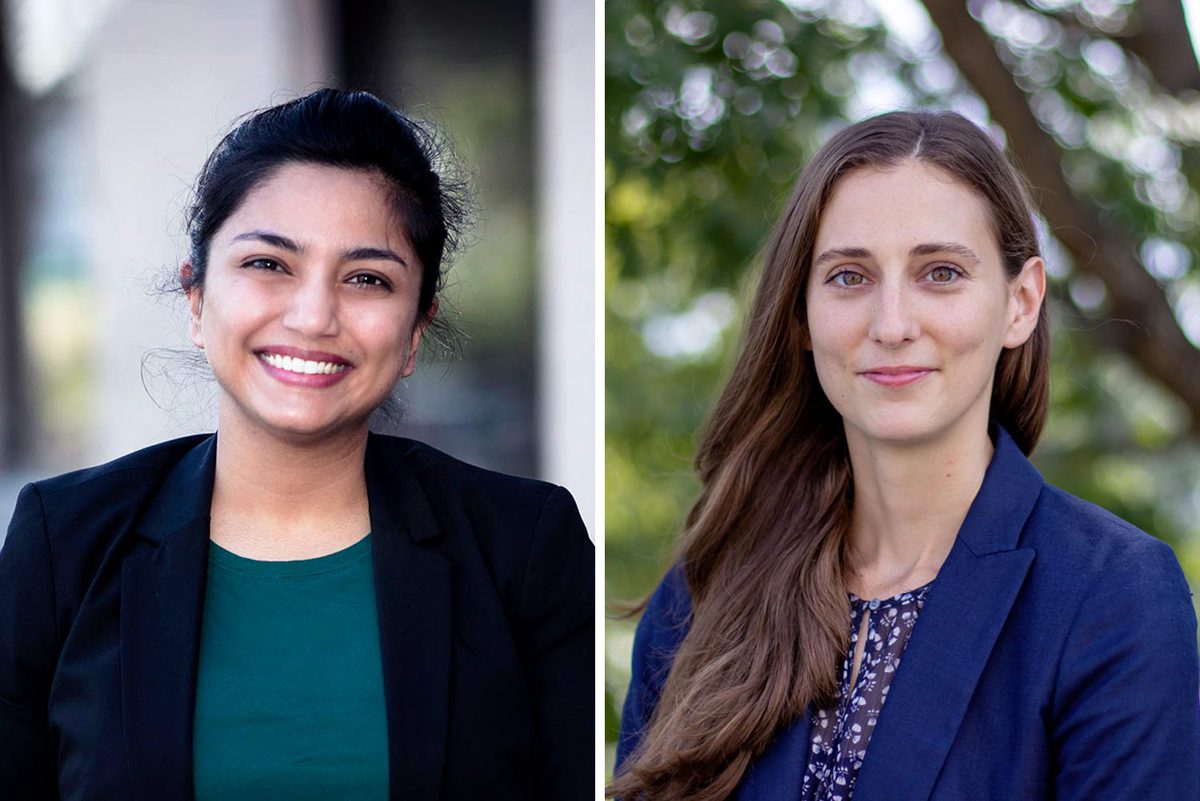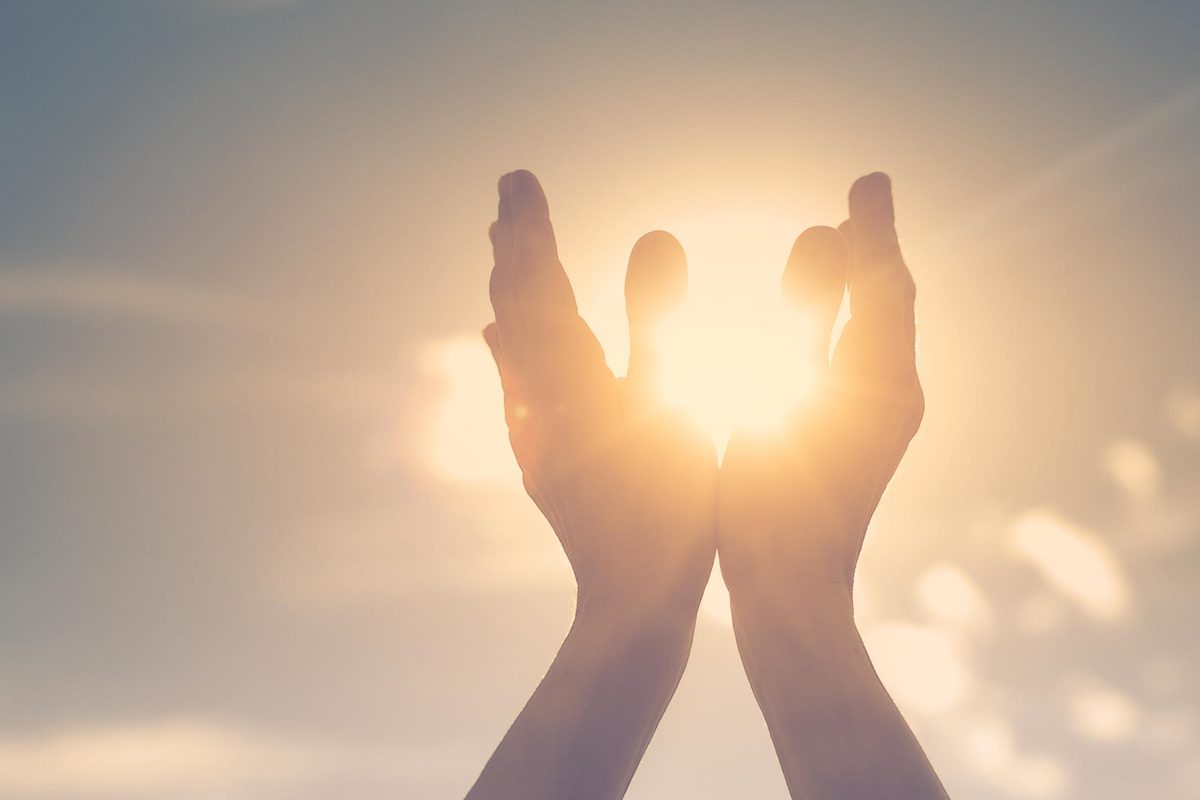What role does geography play in determining a region’s religious characterization? Are individuals more likely to live in a certain location if they practice a particular religion? Does the assumption that major metro areas are more likely to harbor diverse religious communities hold true?
The questions had long intrigued Shonel Sen and Rebecca Draughon.
Recently, Sen, a demographer at the University of Virginia’s Weldon Cooper Center for Public Service, and Draughon, a UVA religious studies graduate student, took a deep dive into the demographics of religion in Virginia.
UVA Today caught up with Sen and Draughon to learn more.
Q. You’ve said this study was the result of both personal interest and professional curiosity. If you’re comfortable doing so, can you expand on that a little? Where did each of you grow up and do you feel that it had any bearing on your own religious beliefs?
SS: Growing up in India, I witnessed the practical realities of a plurality of deep-seated religious roots operating in tandem with professional secularism. I myself was born into Hinduism, but my parents, not being very active practitioners, allowed me the option to choose my own belief system as I grew up, for which I remain incredibly grateful. And this flexibility fueled my curiosity about how religious beliefs impact decision-making for different individuals and communities, as well as the degree to which it influences the demographic and socioeconomic fabric of our society.
RD: I grew up in Tallahassee, Florida, to a pretty religious family. We went to an Assembly of God church when I was very young before settling into a Southern Baptist congregation. I was always deeply curious about Christianity and other religions, and when I decided in undergrad to major in religious studies, my family was very supportive. I think they hoped I would end up in some sort of ministry, but I’ve always been more drawn to the academic study of religion. I landed at UVA for graduate school and am currently a Ph.D. candidate in the religious studies department. In a sense, I’ve tried to make my curiosity about religion my profession.

Researchers Shonel Sen, left, and Rebecca Draughon have found that, in many ways, religious trends in Virginia mirror the rest of the country. (Photo by Dan Addison, University Communications; contributed photo)
Q. Can you tell us a little about the methodology you used in this study, and how you were able to collect the data you needed?
A. Typically, data on religious identity is collected either by polling individuals (who may or may not identify with a religious tradition, or who might self-identify with a religious tradition, but may actually not attend services) or by surveying religious institutions and their affiliated membership.
For this research, we relied primarily on the U.S. Religion Census, which is accessible through the Association of Religious Data Archives, or ARDA. This survey, conducted every 10 years, polls churches and religious institutions for their membership data, and contains statistics for 236 religious groups, including congregation counts within each state and county in the U.S. and, where available, membership and adherent figures.
Q. In exploring the religious makeup of Virginia and its localities, what were your main findings, and how did they compare, if at all, to national trends?
A. In many ways, the religious trends in Virginia mirror the rest of the nation, with 73% of Virginians identifying as Christian, just above the national average of 71%. A large portion of the people who do not identify as Christian are actually religiously unaffiliated, while only 6% of people polled identify with a non-Christian religion.
While the second-largest religion differs nationally depending on the region, Virginia is similar to its neighbors – North Carolina and West Virginia – with Islam being the second-largest religious group.
Looking at religious affiliations across localities in the commonwealth, we were able to see who practices what religion where, the number of particular congregations in a given area, as well as the number of practitioners who worship there.
Q. Did you do any breakdown by denomination within Christianity?
A. Categorizing religious traditions and denominations is often debated, so we followed the classification schema standardized by the ARDA. Nearly 55% of Virginia’s population is not affiliated with any particular religious body (church, synagogue, mosque, etc.) even though some might consider themselves religious; 19% of residents are evangelical Protestant, 11% mainline Protestant and 8% Catholic. The remaining religions practiced in Virginia fall into the “other” category, such as Buddhism, Hinduism, Islam, Judaism and Mormonism, for instance.
Q. Where are some of the most religiously diverse places in the state and, on the flip side, where are some of the least diverse?
A. We looked at religious diversity using multiple metrics: congregation counts (number of particular groups within a geographic area); number of adherents (number of people who belong to a particular religion within a given locality); and adherence rate (the number of adherents per 1,000 residents – which allows a per-capita proxy measurement to understand how diverse a given locality might be according to its population size).
When we look at diversity through the congregation count, major metro areas win out. Not surprisingly, Fairfax County, Prince William County and Richmond city are places where we find the most congregations of different religions. These high-population areas are also where we find the highest number of adherents. In many ways, this is very intuitive – in places where many people live, it’s not surprising to find many different religious communities.
But the congregation metric only gives us part of the picture. When we look at adherence rates, that is the number of people affiliated with a particular religion per 1,000 residents, we find that several of Virginia’s more rural areas, including Danville and Emporia City, have rates that are on par with those of high population areas.
To be clear, though, not all rural areas boast high non-Christian adherence rates. Some of Virginia’s smaller areas, such as Charles City, have essentially no residents who are affiliated with a non-Christian religion.
Q. In the course of your study, what surprised you the most and why?
A. We went into this research with the hypothesis that major metro areas within the commonwealth would be the most diverse in terms of variety of religions practiced. While this assumption was borne out in the data, we were surprised to see the high rate of non-Christian practitioners within Virginia’s more rural regions. This high non-Christian adherent rate in some rural areas may feel counterintuitive, but it gave us a better appreciation of Virginia’s religious landscape and showed the lesser degree of correlation between urban geography and presence of diverse religious adherents than we originally anticipated.
We were also surprised to see that Charlottesville, given its modest size, is home to three Buddhist congregations – the same number as the much larger Prince William County and Alexandria, even though the size of these congregations differs.
Another interesting feature was how much the high non-Christian adherence rate in rural regions is due to Islam. Although adherents to Islam make up a very small percentage of Virginia’s population overall, it was neat to see that its adherents were not just in the major metro areas.
Q. Overall, what was your biggest takeaway in regard to geography’s effect on a region’s religious makeup?
A. Outside of Virginia’s major metro areas, many of the state’s more rural locations also reflect religious diversity, often owing to the presence of a significant Muslim diaspora. Out of Emporia City’s 29% non-Christian population, most of them are Muslim. This is not to say that all religious diversity can be attributed to Islamic adherents; most of Falls Church’s 34% non-Christian population are Jewish. However, Islam remains a major driver of Virginia’s religious diversity.
Q. How did the pandemic, if at all, play into everything you examined? And with vaccinations on the rise and more people likely headed back to places of worship, do you expect the landscape to look much different in the future?
A. While our findings do not cover the pandemic period explicitly, as the data is from pre-pandemic surveys, our research suggests that in the short run, factors such as coronavirus caseloads and vaccination rates have led to an evolution in the manner of worship and religious services offered. In-person gatherings may not revert to past normal as people grow accustomed to routines developed during the pandemic. While we don’t yet know the lasting effects of the pandemic on religious habits, it will be interesting to see if and how the geographic distribution of religious adherents in Virginia is altered by the impacts of COVID-19 on births and migration behavior.
Q. Is there anything else you found interesting or will be keeping an eye on moving forward?
A. Even with the wide distribution of religious minorities and diverse communities within the commonwealth, the majority of Virginia residents identify as Christian. How this characterization might develop over time remains to be seen.
Going forward, we are eagerly awaiting the results from the next religious census (which is currently being conducted), to see how Virginia’s religious identity has changed over time.
Media Contact
Article Information
July 13, 2021
/content/who-practices-what-religion-where-virginia

